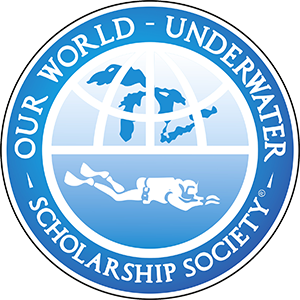The next stop on my grand tour of Europe was back to the UK where I spent the month travelling around and working with a number of different organisations involved in the management and protection of shipwrecks. My first hosts were the coastal and marine team at Wessex Archaeology, one of the largest archaeological practices in England. The team consisted of a number of maritime archaeologists who as well as undertaking commercial maritime archaeological jobs for clients such as the Port of London are also the contractor for the Protection of Wrecks Act on behalf of the UK national heritage agencies. The commercial nature of Wessex maritime work means that all their diving is done with surface supply so although I wasn’t able to dive with them it was very interesting to see both their equipment and methods of doing archaeological work. I found my time at Wessex really rewarding as I not only got to meet some great people but also to see how maritime archaeology can be undertaken on a commercial basis.
Next up I decided to visit the historic coastal town of Cornwall on the South West Coast of England where Jim Standing the director of Fourth Element and the European Scholarship Coordinator was based. Cornwall is exactly as you might imagine an English seaside town to be with hundreds of small boats moored along a shore which is littered with nautical themed English pubs. Cornwall is also known for its diving and Jim and I managed to fit in a couple of dives including one rather successful foray for scallops. One of the definite highlights of my time in Cornwall would have to be my tour of the A.P. Valves factory. This company produces the Buddy brand of diving products and has been one of the most popular diving manufacturers in the UK since 1969. Recently they have moved into the production of rebreathers namely the inspiration and evolution and it was a great experience to see not only how these amazing bits of kit are made but also tested in their custom built lab. It would have been wrong to spend any length of time in Cornwall without trying the local culinary speciality so on the last day of my stay Jim took me down to Lizard Point the most Southerly Point of the UK to have Cornish Pasty’s and it must be said that neither the view nor the pasty disappointed.
From Cornwall I travelled to Portsmouth to spend some time with English Heritage (EH) the Government organisation tasked with the management and protection of shipwrecks within English waters. While there I got to work on a number of projects which aimed to raise the profile of protected shipwrecks among the diving and general public alike. My time with EH was really interesting as it gave me a unique insight into the kind of roles and activities which are needed to manage and protect underwater cultural heritage on a national scale. While in Portsmouth I also visited the historic dockyards which is the home of the Royal Navy and also the historic ships HMS Victory, HMS Warrior and the amazing Mary Rose.
My next project saw me taking the train across England and up into a beautiful but very rainy Scotland. My destination was the town of Kenmore on the edge of Loch Tay where the maritime archaeologists Nick Dickson and his wife Barrie had offered to host me at the Crannog Centre, a museum built around their excavation of Crannogs there since 1980. Nick and Barrie had organised a whole range of projects for me to take part in and I found myself doing everything from helping out at the museum, operating the sidescan sonar during a survey of the Loch and even building a replica Bronze Age log boat.
My final trip for the month was from Loch Tay up to the Orkney Islands off the northern tip of Scotland. The Orkney Islands are a Mecca for wreck divers in Europe with the remains of a German Fleet that was scuttled there at the end of World War One. I was in Orkney to dive the fleet aboard the charter boat Radiant Queen along with the fantastic team from Scapa Scuba. Over the next few days I was spoilt being taken to the sites aboard a fantastic boat and guided around all three Konig class battleships and three of the four remaining cruisers by a hugely knowledgeable divemaster. The diving in Scapa Flow was unlike any I had ever experienced before. The massive ships lie between 15 and 46 metres deep and visibility was such that you could clearly see huge sections of the vessels at a time and make out features ranging from the big 15 inch guns to the officers bath tub! August was such an amazing month not only for the amazing things I got to do but also for all the great people I met along the way and a big thank you must go to everyone who made it all possible





